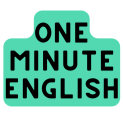Practice English or Spanish with AI here
When deciding on whether “infront” or “in front” is correct, you should know that it will always be “in front.” The use of “infront” will always be incorrect and considered a misspelling. There are no additional rules or forms. So, it’s pretty simple and straightforward.
But, for some reason, some people get confused about this little tidbit. Even native English speakers will misspell “in front.” However, if you can remember that there’s a space between “in” and “front,” everything else will be a cinch.
Defining “In Front”
The phrase “in front” means to either be in a leading or forward position. It combines a preposition with a noun to create a noun. This refers to a place, spot, or area in some way, shape, or form. It can reference a race, championship, seating arrangement, or other areas that are before something.
Understanding How “In Front” Works
To best understand “in front” within proper context and usage, you need to see it in action. Consider the list of examples below to compare and contrast the correct use of “in front” versus “infront.”
Correct: Racecar number seven stayed out in front through every lap.
Incorrect: Racecar number seven stayed out infront through every lap.
Correct: I couldn’t see Mary at the wedding because I was sitting in front.
Incorrect: I couldn’t see Mary at the wedding because I was sitting infront.
Correct: He sits in front of the television too much.
Incorrect: He sits infront of the television too much.
Mnemonic Device
The best way to see if you’re spelling “in front” correctly is by the ability to put “the” between “in” and front.” Doing this means you need to add a space to make a cohesive sentence since inthefront is definitely incorrect. Plus, if the sentence still makes logical sense after including “the,” then you know you have it right.
Racecar number seven stayed out in the front through every lap.
I couldn’t see Mary at the wedding because I was sitting in the front.
He sits in front of the television too much.
Conclusion
Knowing if “infront” or “in front” is right isn’t difficult, there’s only one acceptable way: “in front.” It’s always going to be two words to indicate that a person or object is sitting or positioned before something. There will always be a space between “in” and “front.”
- 10 Words or Phrases “To Make Her Feel Special” - October 16, 2024
- Synonym Generator - September 11, 2024
- [BrutallyHonest] Langua AI Review – Can you learn a language with AI? - April 23, 2024

